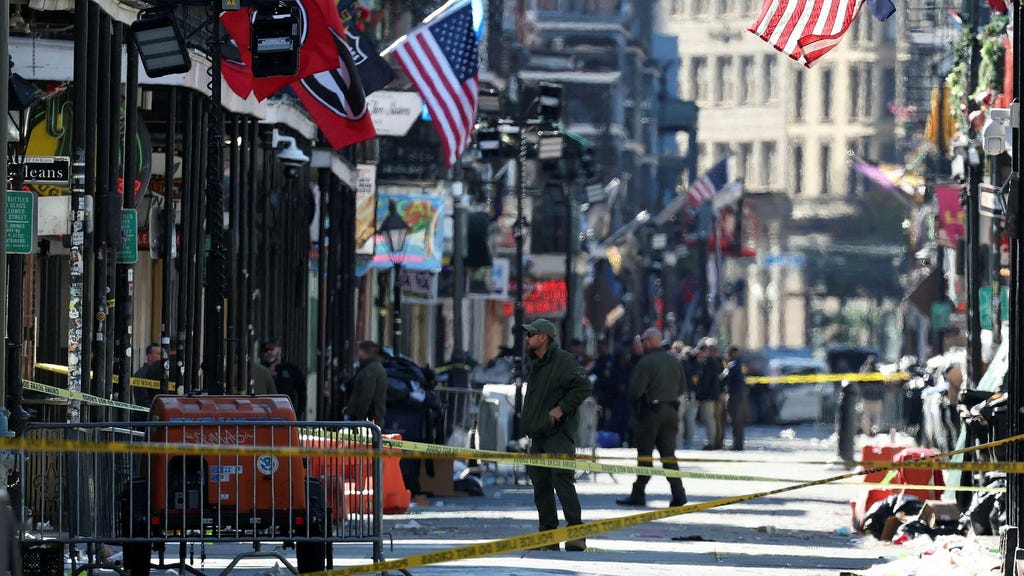The New Year’s Day tragedy in New Orleans, which claimed the lives of at least ten individuals, has sent shockwaves through the community and beyond. Authorities have identified Shamsud-Din Jabbar, a 42-year-old Texas resident, as the prime suspect in the horrific incident. The investigation is still in its early stages, but the emerging details paint a concerning picture of a man with a history, albeit a seemingly minor one, of run-ins with the law. Jabbar’s alleged involvement raises numerous questions about the motivations behind the attack and the potential warning signs that may have been missed. The incident underscores the urgent need for deeper understanding of the factors that contribute to such acts of violence and the importance of proactive measures to prevent them. The city of New Orleans mourns the loss of life and grapples with the aftermath of this senseless tragedy.
Shamsud-Din Jabbar’s background, including his service in the American military, is under intense scrutiny as investigators attempt to piece together a timeline of events leading up to the New Year’s Day attack. While details regarding his military service remain limited, understanding the nature and duration of his involvement could shed light on potential contributing factors to his alleged actions. It is crucial to avoid hasty conclusions and resist the temptation to generalize about veterans. However, exploring any potential links between his military experience and subsequent behavior is a necessary part of a thorough investigation. Authorities are also examining Jabbar’s past criminal record, which reportedly consists of less serious offenses, to determine if there were any missed opportunities for intervention or if any patterns of behavior could have foreshadowed the tragic events in New Orleans. The focus on Jabbar’s history is not meant to excuse or justify his alleged actions but rather to gain a comprehensive understanding of the individual and the circumstances that may have contributed to the tragedy.
The New Orleans community is reeling from the shock and grief of the New Year’s Day attack, struggling to comprehend the senseless loss of life. The victims, whose identities are gradually being released, represent a cross-section of the vibrant and diverse city, leaving a void in the lives of their families, friends, and the community as a whole. Vigils and memorials have sprung up across the city, offering spaces for collective mourning and shared grief. Community leaders and religious figures are providing solace and support to those struggling to cope with the emotional aftermath of the tragedy. The healing process will undoubtedly be long and challenging, requiring a concerted effort from the community to support one another and rebuild in the face of this devastating event.
The investigation into the New Year’s Day attack is a complex and multifaceted undertaking, involving local, state, and federal law enforcement agencies. Investigators are meticulously gathering evidence, including witness testimonies, surveillance footage, and forensic analysis, to reconstruct the events of that day and establish a clear timeline of Jabbar’s alleged involvement. The motive behind the attack remains a central focus of the investigation, as authorities try to determine what drove Jabbar to allegedly commit such a heinous act. Understanding the motive is crucial not only for bringing justice to the victims and their families but also for potentially identifying preventative measures to mitigate the risk of similar tragedies in the future. The investigation is expected to be lengthy and meticulous, as authorities are committed to uncovering every detail and ensuring a thorough and comprehensive understanding of the events that unfolded.
The New Year’s Day tragedy in New Orleans has reignited the national conversation about gun violence and the urgent need for effective solutions. While the specifics of how Jabbar allegedly obtained the weapon used in the attack are still under investigation, the incident highlights the ongoing debate surrounding access to firearms and the effectiveness of current gun control measures. Advocates for stricter gun laws are calling for enhanced background checks, limitations on certain types of firearms, and increased funding for mental health resources. Opponents argue that such measures infringe on Second Amendment rights and that the focus should be on enforcing existing laws and addressing the root causes of violence. The tragic events in New Orleans serve as a stark reminder of the human cost of gun violence and underscore the need for a comprehensive and multifaceted approach to addressing this complex issue.
In the wake of the New Year’s Day attack, the city of New Orleans is grappling with both the immediate aftermath and the long-term implications of this tragedy. The focus is on providing support and resources to the victims’ families, addressing the emotional and psychological needs of the community, and reviewing security protocols to enhance public safety. The incident has also prompted discussions about the need for improved mental health services and early intervention programs to identify and address potential warning signs of violent behavior. The road to recovery will be long and arduous, but the resilience of the New Orleans community is evident in the outpouring of support and the collective determination to heal and rebuild. The tragedy serves as a stark reminder of the importance of community, compassion, and the ongoing need to work towards a safer and more peaceful future.














